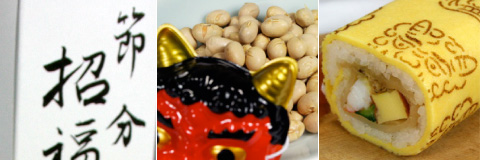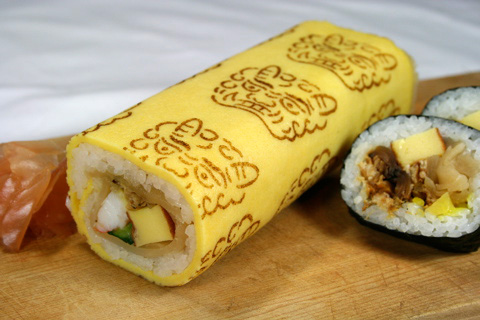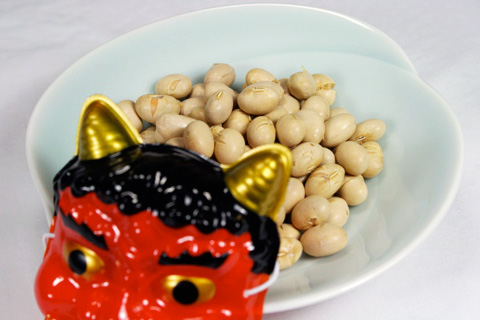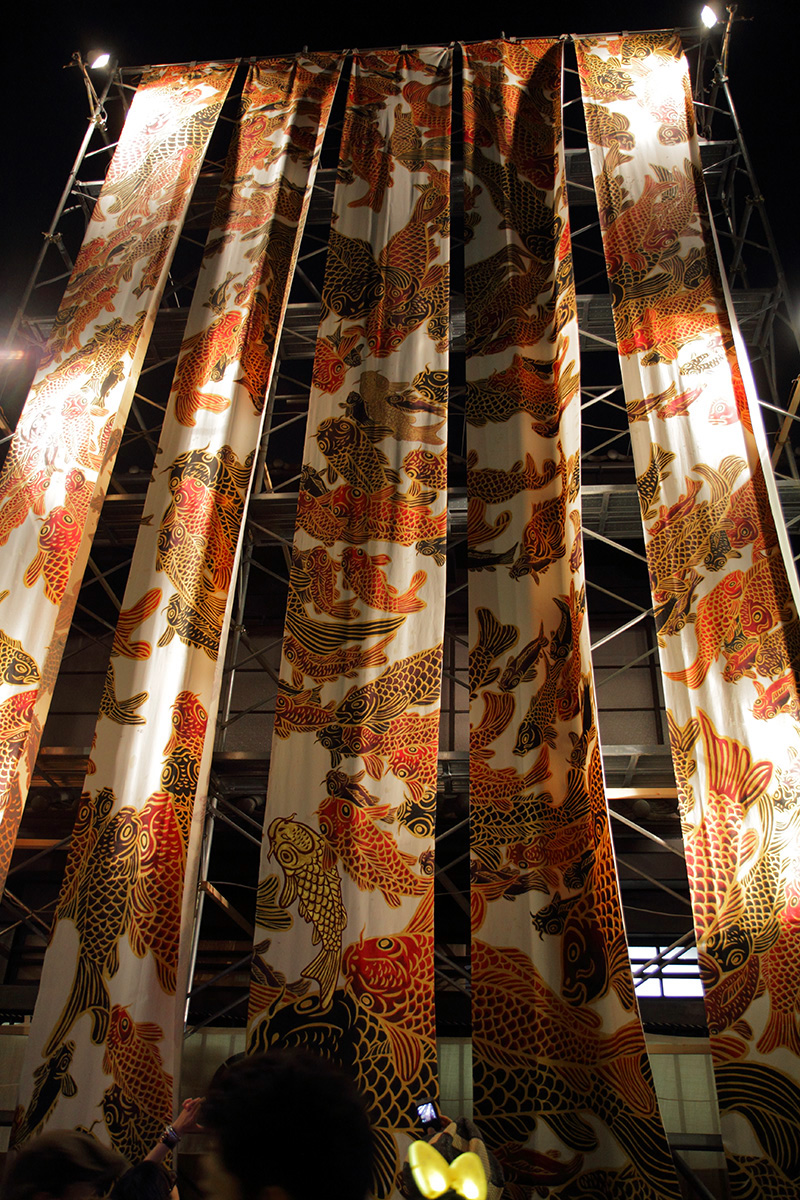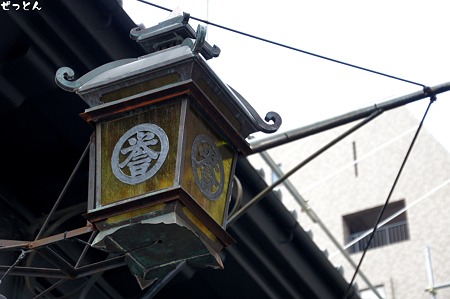西方人眼中的日本电影 Foreign relations
There are three main strands of Japanese film shown in the west: animation, sex and horror. None of these owes much to traditional Japanese film, but what are niche titles in their own country are often taken as examples of national cinema when they move abroad. | 在西方放映的日本电影主要有三大题材:动画片、性爱以及恐怖片。它们都与传统的日本电影没什么关系,但这些在日本国内的细分类影片“转战”国外后,却常被视作代表了整个日本电影。 |
“I think what film distributors select for release in Britain is mostly based on how we like to view Japan, rather than any reality about the country itself,” says Jasper Sharp, author of The Historical Dictionary of Japanese Cinema, and contributor to Whose Film Is It Anyway?, the Japan Foundation’s touring programme of recent Japanese film. | “我觉得发行商选择在英国上映的影片主要基于我们希望如何看待日本,而非日本这个国家的真实状 况,”加斯帕•夏普(Jasper Sharp)说,他是《日本电影历史字典》(The Historical Dictionary of Japanese Cinema)一书的作者,也是《这究竟是谁拍的电影》(Whose Film Is It Anyway)日本电影周的发行人,这是由日本国际交流基金会(Japan Foundation)组织的系列活动,巡回放映该国近一阶段所摄影片。 |
Pokémon (1998) and Dragon Ball Z (1989) at one end of the spectrum, and Audition (1999), Ichi the Killer (2001) and The Ring (1998) at the other, have come to define Japanese cinema for western viewers. These are films that comfortably reinforce the perception of two opposing extremes of Japanese culture. At one pole there is what Donald Richie, a US-born critic of Japanese film, calls the “frivolous Japan”; at the other, the Japan of dark, often fetishistic or sadistic horror and pornography (in its own way just as frivolous). The only middle-ground films we encounter come from Studio Ghibli, such as Hayao Miyazaki’s Spirited Away (2001), and even those, though often excellent, are of limited variety in style or content. | 《宠物小精灵》(Pokémon, 1998年)与《龙珠Z》(Dragon Ball Z, 1989)是整个电影周的开场影片,而《切肤之爱》(Audition,1999年)、《杀手阿一》(Ichi the Killer,2001年)以及《午夜凶铃》(The Ring,1998年)则是电影周的闭幕影片,它们一步步为西方影迷诠释何为日本电影。这些影片充分强化了日本文化中水火不容的两个极端概念,一端是美国 出生的日本影评家唐纳德•里奇(Donald Richie)所谓“琐碎无聊的日本”,另一端展示的则是日本阴暗的一面,常常充斥着迷信、虐待狂式的恐怖以及大量情色描写(同样琐碎无聊)。我们看到 的、介于两者之间的影片来自吉卜力工作室(Studio Ghibli),如宫崎骏(Hayao Miyazaki)的《千与千寻》(Spirited Away,2001年),而那些影片(通常情况下虽说很棒)在风格与内容上变化实在乏善可陈。 |
Whose Film Is It Anyway?, which runs at the ICA before touring the UK, consists of nine works from the past decade, each demonstrating a departure from what we have come to expect from Japanese film. The most famous filmmaker in this season, Masayuki Suo, is represented by I Just Didn’t Do It (2006), a sombre, sincere examination of the Japanese legal system in which a young man is arrested and charged with groping a schoolgirl on the public underground. It offers an engrossing look at injustice and human relationships under pressure. | 《这究竟是谁拍的电影》电影周在英国全国巡回展前,先在伦敦当代艺术学会(Institute of Contemporary Arts,ICA)进行了放映,共放映了过去10年所拍的9部影片,每一部的内容都背离了西方人对日本电影的固有期望。这次电影周最知名的导演是周坊正行 (Masayuki Suo),他执导的影片《正义之裁》(I Just Didn’t Do It,2006年)冷峻诚挚地审视了日本的司法制度,影片拍摄的是一位年轻人遭到逮捕,罪名是在地铁上猥亵某初中女生,生动地展示了司法不公以及重重压力 之下的人际关系。 |
A common characteristic of the films in the season is the nuanced interactions between characters. In Yoji Yamada’s About Her Brother (2010) a mother and daughter are forced to break with the mother’s juvenile middle-aged brother, later finding him dying of cancer in a hospice. It’s a sophisticated, suitably unsentimental film – were it made in Hollywood it would almost certainly ruin the effect of its pathos with sugar. All Around Us (Ryosuke Hashiguchi, 2008) follows a couple struggling to move on from the death of a child. Set over the course of 10 years, it’s simultaneously sweeping in narrative scope and minutely detailed in its depiction of human relationships amid tragedy. Bad Company (2001), the oldest film and winner of the jury and international critics’ prizes at Rotterdam Film Festival, mixes the pragmatism and naivety of childhood and the pains of growing up. | 本次电影周影片的共同特点是各个角色之间的微妙关系。在山田洋次(Yamada Yoji)执导的影片《弟弟》(About Her Brother,2010年)中,母亲与女儿被迫与母亲不成熟的成年弟弟一刀两断,最后却发现弟弟在收容所里因罹患癌症将不久于人世。这部影片情节曲折、 情感控制拿捏到位——若是在好莱坞拍摄,几乎肯定会用甜言蜜语的东西破坏整体悲情效果。桥口亮辅(Ryosuke Hashiguchi)执导的影片《幸福的彼端》(All Around Us,2008年)讲述的是一对夫妇如何在孩子夭折后风雨同舟的故事。整个故事情节历时10年,既实现了叙事范围的包罗万象,又细致入微地刻画了悲剧笼罩 中的人际关系。夺得鹿特丹电影节(Rotterdam Film Festival)最佳影片及影评人奖的《恶童日记》(Bad Company,2001年)则是这个系列中最早拍摄的影片,夹杂着童年时代的天真烂漫、爱管闲事以及成长的烦恼。 |
The selection also includes two excellent comedies (a particularly under-represented type of Japanese film in the west). The Dark Harbour (Takatsugu Naito, 2009), in which a lonely fisherman records a video introduction for a dating service, features a very funny scene in a clothes store. Searching for an outfit that will impress city women, the fisherman is offered Johnny Depp’s tasseled cowboy jacket as well as the flowery shirt that Neil Armstrong left on the moon and that Nasa subsequently recovered. Arriving at the dating party, another fisherman is wearing the same shirt. But it is a deeper film than this suggests; full of pathos and understated emotion. A Stranger of Mine (Kenji Uchida, 2005), which won the screenwriter’s prize at Cannes that year, is an expertly structured crime comedy of errors, consisting of well-rounded characters who cross paths during one night in Tokyo. In comedy, as in drama, the force of these films comes from the varying aspects of human experience they depict. | 这个系列还选了两部非常上乘的喜剧片(在西方尤其不受待见的日本影片)。内藤隆嗣 (Takatsugu Naito)的《不灯港》(The Dark Harbour,2009)讲述了一位寂寞的渔民录制了一段自我介绍的视频去相亲,其中一段在服装店的场景让人忍俊不禁。渔夫想买一套能打动城市姑娘的衣 服,结果售货员给他看了一件约翰尼•德普(Johnny Depp)带流苏装饰的牛仔夹克,还有一件尼尔•阿姆斯特朗(Neil Armstrong)不慎落在月球上、后由美国国家宇航局(Nasa)找回的花哨衬衫。到达相亲地场后,他发现另一位渔民也穿着一模一样的衬衫。但电影的 蕴意则要深刻得多,充满了忧伤以及尽在不言中的情感。内田健二(Kenji Uchida)的《遇人不熟》(A Stranger of Mine,2005年)获得了当年的戛纳电影节的“最优秀剧本奖”,这部犯罪类的喜剧片结构安排巧妙、到处充斥着阴差阳错,刻画了诸多多才多艺的角色,他 们在某一天晚上在东京不期而遇。与舞台剧一样,喜剧影片的震撼力来自各个角色刻画的多样人生经历。 |
These films show the continuance of an older, more character-driven, humanist tradition of Japanese film. | 这些影片展示了对日本电影历史更为悠久、由角色带动情节的人文主义传统的传承。 |
Yasujiro Ozu, one of the three Japanese directors most revered in the west (Akira Kurosawa and Kenji Mizoguchi being the others), was above all interested in people. When beginning a film, he and co-screenwriter Kogo Nada worked backwards: they would sit down and write dialogue first, before even the characters were conceived or the story decided. | 小津安二郎(Yasujiro Ozu)是西方社会最推崇的三位日本导演之一(其他两位是黑泽明(Akira Kurosawa)与沟口健二(Kenji Mizoguchi)),他最为关注的是人。每次开拍电影时,他都会与编剧Kogo Nada在后台工作:坐定后先拟好对话,进而再构思角色及故事情节。 |
In an interview with Sharp, Richie pointed out the effect of this process: “There’s a rightness, there’s a logic, there’s an inevitability, there’s a reality about the characters.” Tokyo Story(1953), Ozu’s most famous film, shows an elderly couple who make their first trip to the capital to visit their family, only to find them not much interested in a reunion. | 一次采访夏普时,里奇指出整个过程如此处理的效果:“这样的角色贴切、符合逻辑、不可避免以及 具有现实意义。”《东京物语》(Tokyo Story,1953年)是小津安二郎执导的最著名影片,讲述了一对老夫妻第一次到首都东京去看望自己的儿女,到头来却发现他们对自己的到来不为冷不热。 |
For Kenji Mizoguchi too, working at the same time as Ozu, humanity is a primary theme; Ugetsu Monogatari, which came out in the same year as Tokyo Story, and Sansho the Bailiff, which followed in 1954, are stories of betrayal, loyalty, family and friendship. Only Kurosawa, the most famous in the west and the most western of the three, could be accused of having other concerns. Kurosawa is a master of dramatic storytelling; Mizoguchi and Ozu are masters of dramatising human experience. | 与小津安二郎同时代的沟口健二也是如此,所拍影片最大的主题是人性;《雨夜物语》 (Ugetsu Monogatari)与《东京物语》同一年公映,《山椒大夫》(ansho the Bailiff)则是于1954年公映,它讲述了背叛、忠诚、家庭及友谊。只有黑泽明(三位导演之中在西方社会最知名,也是最具西方风格的导演)被视为还 关注其它问题。黑泽明是讲述曲折动人故事情节的大师:而小津安二郎与沟口分健二则是生动描述人类经历的大师。 |
Yet western viewers watching Japanese cinema often can’t get past the kimonos, the slippers and the bowing, to the film itself. This has a lot to do with the way westerners see eastern artworks, “rather passively assuming their mysteriousness”, writes Adam Mars-Jones in Noriko Smiling (2011), the critic and novelist’s brilliant essay on Ozu’s Late Spring (1948). | 然而观看日本电影的西方影迷通常无法越过和服、木屐以及鞠躬而直达影片内容本身。这与西方人看 待东方艺术品的方式有很大关系,“颇为顺从地接受神秘玄虚的东西”,影评家兼小说家亚当•马斯-琼斯(Adam Mars-Jones)在评论小津安二郎所执影片《晚春》(Late Spring,1948年)的鸿文Noriko Smiling中如此写道。 |
Many critics suffer from a more intellectualised version of this wood-for-the-trees syndrome. One of the aims of Noriko Smiling is to recover Late Springfrom critics such as Paul Schrader (screenwriter of Taxi Driver and director of a biopic of Japanese novelist Yukio Mishima) who, prioritising style over content, insisted on its “transcendental” qualities. Referring to a famous shot of a vase intercut with shots of the heroine crying, Schrader says the tears themselves have little meaning – he subtracts all emotion, or as Mars-Jones puts it, robs the tears of “all possible moisture content”. It seems, then, that a film being Japanese is the cue for western viewers to not look hard enough, and for some western critics to look too hard. | 许多评论家陷入了纯理性化的因小失大综合症。评论文章Noriko Smiling的目的是为《晚春》正名,保尔•施雷德(Paul Schrader)这些说三道四的评论人士认为风格的重要性优于内容,坚持这部电影的先验性,施雷德是影片《出租车司机》(Taxi Driver)的编剧,并执导了日本小说家三岛由纪夫(Yukio Mishima)的传记电影。在谈及影片中花瓶镜头切换与女主人公哭泣的那个著名镜头时,施雷德说眼泪本身并无意义——他把所有的情感都剔除掉,或者正如 马斯-琼斯所言,把眼泪从“所有可能触发动情的内容中”去除掉。所以,日本风格的影片似乎就是暗示西方观众不要凝神细看,却让有些西方影评家不放过任何细 枝末节。 |
The importance of all the films in the Japan Foundation’s season lies not in their “Japanese-ness” but in their worldliness, their humanism. Of course, we can’t, and shouldn’t, separate a film from its country of origin. But film is a human medium and its roots (pathos, empathy, joy, anger, fear) are universal elements. “That’s what I think they mean when they say that films cross borders,” director Masayuki Suo suggests. “What do we call a film? If we call it the art of light and shadow reflected on a screen, I think that’s universal. Continuing to stir up the existence of human beings themselves – that’s what film is.” | 日本国际交流基金会组织的本次电影周所有影片的重要性不在于它们的“日本特色,而是其全球视野 与人文精神。当然,我们不可能,也不应该把电影与拍摄国隔绝开来。但电影是人类交流的媒介,它的本质要素(痛苦、移情、欢乐、恐惧)是普世通用的。“这就 是当别人都说电影可以跨越国界,其所指意义所在,” 导演周坊正行说。“何为电影?如果称它为反射至幕布上的灯光与阴影艺术,我觉得全世界都一样。不断拨动人类自身的生存状态——我想那就是电影的本质。” |
‘Whose Film Is It Anyway?’ runs at ICA, London, until February 16 and tours the UK until March 28 www.jpf.org.uk | 《这究竟是谁拍的电影》在伦敦ICA放映至2月16日结束,然后在全英国巡回放映直至3月28日,具体详情请浏览网址:www.jpf.org.uk。 |
译者:常和 |




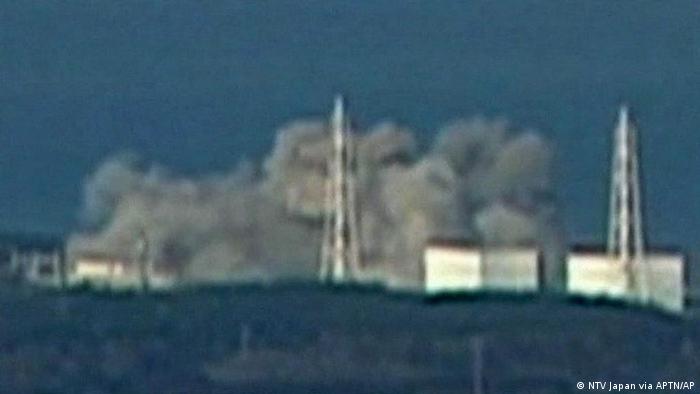
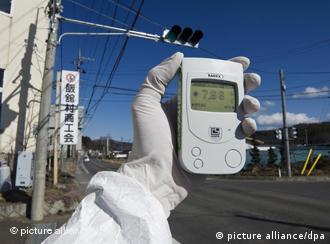
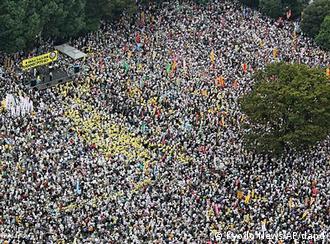
![[item image] [item image]](http://ia700500.us.archive.org/16/items/spiritofjapanese00noguuoft/spiritofjapanese00noguuoft.gif?cnt=0)



